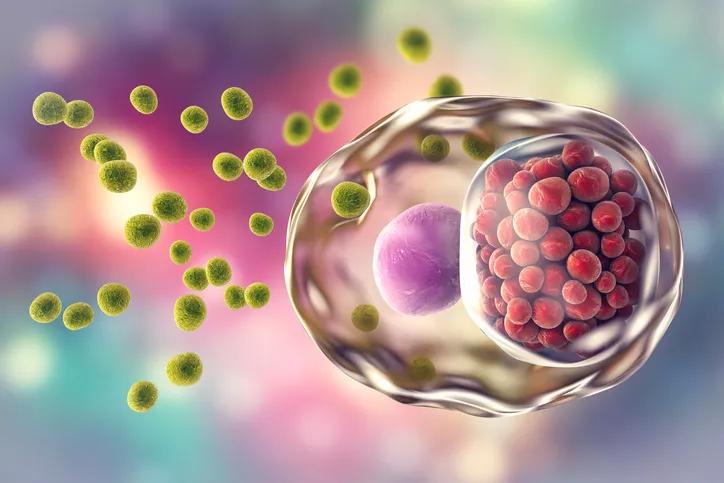And find out why prevention and protection are so important

In April, the Centers for Disease Control and Prevention (CDC) published its 2019 STD Surveillance Report. It revealed that the annual cases of sexually transmitted infections (STIs — also known as sexually transmitted diseases, or STDs) in the United States reached an all-time high for the sixth consecutive year.
Advertisement
Cleveland Clinic is a non-profit academic medical center. Advertising on our site helps support our mission. We do not endorse non-Cleveland Clinic products or services. Policy
In 2019, there were:
According to Ob/Gyn Infectious Disease specialist Oluwatosin Goje, MD, “It’s absolutely critical for at-risk patients to be screened so that they can be treated promptly for sexually transmitted infections (STIs).”
While STIs affect many, they hit people of color, young people and gay or bisexual men even harder.
According to the Surveillance Report, the overall STI rates among African American or Black people were five to eight times higher than those of non-Hispanic white people. The STI rates for Native Americans, Alaska Natives, Native Hawaiians or other Pacific Islanders were three to five times higher than those of non-Hispanic white people. And for Hispanics or Latinos, the rates were almost double as compared to non-Hispanic white people.
About half of all of 2019’s primary and secondary syphilis cases occurred among gay and bisexual men. The gonorrhea rates were also 42 times higher among this group than those of heterosexual men in some areas of the country.
Advertisement
As for young people, 61% of chlamydia cases occurred among those between the ages of 15 and 24.
This age group also made up 42% percent of gonorrhea cases.
The CDC cites that pre-pandemic reductions in STI screening, treatment, prevention and partner services contributed to the increase in the statistics. However, since the beginning of the pandemic, more STI program staff have been put into place at state and local levels to help combat the growing case numbers.
In recent years, antibiotic resistance has become more of a problem in treating gonorrhea. Dr. Goje says that steps to combat this involved blending the use of two antibiotics.
“We began adding oral azithromycin back in 2015 to delay the development of resistance to ceftriaxone. Emerging resistance to ceftriaxone seems to have stopped ever since we implemented this dual-therapy approach.”
According to the CDC, gonorrhea has developed resistance to nearly all of the antibiotics used for its treatment. Right now, there is one last recommended and effective class of antibiotics, cephalosporins, that are used to treat it. The CDC calls this an “urgent public health threat” because gonorrhea control in this country hinges on the successful treatment of this STI.
“Eventually, we may have to turn, yet again, to alternative medications for treating gonorrhea,” says Dr. Goje.
Syphilis continues to be a huge problem in the U.S. According to the CDC, syphilis cases increased by 11.2% between 2018 and 2019. The increase was across sexes, sexual orientations, regions and races.
Dr. Goje notes that since 2000, the rates of primary and secondary syphilis have increased among men. Some of this is due to the increase in cases among men who have sex with men only. Heterosexuals have also contributed to the rise in syphilis cases, with a 178.6% increase during the period of 2015 and 2019.
Cases of congenital syphilis and stillbirth from syphilis are also steadily increasing.
“Congenital syphilis needs to be addressed because this should not be happening where there is access to medical care, technology and medications,” says Dr. Goje. She adds that two factors have been identified relating to congenital syphilis or syphilis in pregnancy.
“When syphilis isn’t treated, it’s can progress to tertiary syphilis. While it’s not very common, it’s still a possibility. Tertiary syphilis affects the heart, blood vessels, the brain and the nervous system. It can occur between 10 and 30 years after infection. Ocular and neurosyphilis are often seen at the end stage of untreated syphilis,” Dr. Goje says.
Advertisement
Ocular syphilis is rare but if left untreated, it can lead to blindness. It can affect any part of the eye and occur at any phase of syphilis. Neurosyphilis is a bacterial infection of the brain and spinal cord.
Dr. Goje says that syphilis can be treated and cured with penicillin. For those who are allergic to penicillin, alternative medications are available as well. But ultimately, she says the best protection against syphilis is practicing safe sex and educating yourself.
To test for gonorrhea or chlamydia, doctors use a nucleic acid test (NAT). These are painless tests involving swab samples.
“Usually, urine can be tested for gonorrhea and chlamydia if swabs can not be collected in female patients,” says Dr. Goje.
To test for chlamydia, doctors need a swab sample collected from the cervix or vagina.
“We can do the swab tests in the office or, in special circumstances, patients can self-collect them, which expedites screening,” Dr. Goje says.
Syphilis screening usually involves a blood test. It detects the infection and helps doctors determine whether it is in a primary or secondary stage, which affects treatment.
Dr. Goje says screening is especially important for both at-risk populations and women ages 15 to 24.
Advertisement
She also advises STI screening for people who:
For all people who test positive for STIs, Dr. Goje suggests offering immediate treatment, intensive counseling, partner tracking and treatment based on local and state government rules.
“Counseling is an important tool that often goes underused. As part of the treatment, it can help patients understand how important it is to consistently and properly use condoms during all sexual activities,” she says.
When condoms are used consistently and correctly, they can help reduce the risks of STIs. While the CDC states that condom use doesn’t offer absolute protection against any STI, lab tests have shown that latex condoms can provide an effective barrier against the smallest STI pathogens. Regular and correct usage of latex condoms can also prevent the transmission of HIV. It can reduce the risk of STIs, which are spread through genital fluids, as well.
These STIs include:
The CDC notes that condoms can reduce the risk for genital ulcer diseases when used the right way and only when the infected area or site of potential exposure is protected.
Advertisement
These STIs include:
And when used properly, condoms can reduce the risk for genital human papillomavirus (HPV) infection and HPV-associated diseases like genital warts and cervical cancer.
STDs that are viral in nature like HIV and herpes don’t go away. They are life-long viruses but can be managed with medications. When left untreated, HIV can progress into AIDS and severely damage the immune system. It takes about 10 years for that to happen.
Herpes can be painful, and if left untreated, it’s possible to have reoccurring outbreaks. Some people experience fewer outbreaks over time. But unlike other STIs, herpes doesn’t get worse over time.
If left untreated, gonorrhea and chlamydia can cause fertility issues or increase the risk of HIV transmission. But the good news is that these STIs can be cured.
Syphilis can cause pregnancy complications and increase HIV transmission when left untreated. It can also lead to lesions and rashes, which might go away on their own. Long-term, untreated syphilis can be fatal.
Viruses like HPV and hepatitis B can be prevented with vaccines, and it’s possible for the immune system to overcome them. But these viruses can cause chronic infections and even cancer.
If you believe that you’ve contracted an STI, don’t leave things to chance. Talk to your healthcare provider and get tested. The sooner you act, the better the chances of getting the right diagnosis and treatment.
Learn more about our editorial process.
Advertisement

Some sexually transmitted infections, like the herpes simplex virus and cytomegalovirus, can be transmitted through saliva and kissing

If left untreated, you risk complications, early labor and passing the infection to your baby

Warm baths, OTC painkillers and cotton underwear can help lessen pain and discomfort

The difference is in the stigma
Flip the narrative and make the process much easier

The little blue pill might help with physical arousal, but there are better treatments for low libido in women

Start having sex about 72 hours before ovulation, then at least every other day during your fertile window

The Yuzpe regimen is less effective than other forms of emergency contraceptives, and it’s associated with more side effects

Start having sex about 72 hours before ovulation, then at least every other day during your fertile window

Attachment theory suggests that your earliest relationships shape connections throughout your life

It isn’t a recognized mental health disorder, but research shows that problematic social media use can negatively affect your mental health, self-esteem and sleep